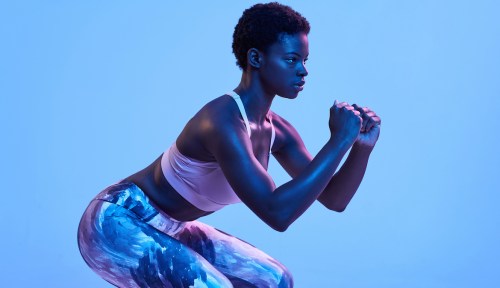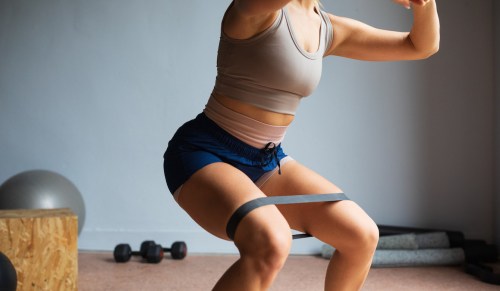If you’ve ever gone on a long walk with a friend or a great podcast, you know that the miles can fly by. Once you get home, however, your body may feel worked in unexpected places. What muscles does walking work? Well, walking is generally considered a great exercise for the glutes, hamstrings, and hips—but according to walking coach and ACE-certified trainer Michele Stanten, walking challenges quite a few unexpected muscle groups as well.
Experts in This Article
board-certified sports medicine and physical medicine and rehabilitation physician with Spaulding Rehabilitation in Massachusetts and instructor in physical medicine and rehabilitation, Harvard Medical School
walking coach, ACE-certified fitness instructor, author, and creator of My Walking Coach
vice president of programming and education at BFT
While walking probably feels as easy as breathing to you now, remember: There was a time when you literally didn’t know how to do it. The movement pattern is fairly intricate, in fact, and requires more muscle engagement than you may think. Every gait cycle is made up of two mini-cycles: the “stance” and the “swing,” according to American Bone Health, an organization for Osteoporosis Education and Awareness.
During the stance phase of walking, your heel strikes the ground, the entire foot touches down, the weight moves into the ball of the foot, and your big toe begins propelling you off the ground. The swing phase then drives the movement of the foot forward through the air before slowing to help you place your heel carefully down for the next step.
During the gait cycle, so many muscles of your legs are hard at work—and not just the obvious ones. “Everybody thinks of walking as a lower body, leg workout. And you are definitely working your leg muscles—your quads, hamstrings, calves, and glutes,” says Stanten. That said, there’s more to your stride. In fact, when you pay a little attention to each step, you’ll see that walking is good exercise and a full-body workout. And yes, getting walks in regularly can indeed change your body in some healthy ways.
Below, Stanten names the three unexpected muscle groups you’re working on during your afternoon stroll around your neighborhood—plus how to send them a little extra engagement love now that you know they’re supporting you mile after mile.
3 unexpected muscle groups you work while walking
1. The anterior tibialis
This muscle runs along the outside of your tibia, or shin bone. “When we’re just walking at our usual pace and we’re not challenging ourselves, most of the time we don’t even notice that muscle,” Stanten explains. “But what happens when you start to speed up is walkers tend to feel [the anterior tibialis] and they’ll get that burning sensation.”
After a long, challenging walk, the anterior tibialis will likely feel fatigued, a sensation that’s easy to confuse for shin splints. “This muscle is responsible for pulling your toes up. So when you swing your leg forward and you land on your heel, your toes are up, and that shin muscle is working. The faster you walk, the more steps you’re taking, and the harder it’s working,” says Stanten.
2. Core muscles
When you’re walking, your midsection has to hold your body upright—and that requires some serious muscle engagement. According to Stanten the spinal stabilizers, the erector spinae, multifidus, and the quadratus lumborum (QL)—which are muscles of the back and pelvis—are hard at work while you walk.
“What those are doing is really supporting your body,” she says. “As you pick up the pace with walking, you start to get some of the hips swivel. So there is a little bit of rotation with walking. So the abdominal muscles are also working in that capacity.” With that in mind, you can pay a little more attention to engaging your core muscles as you move forward (particularly if you’re taking on a big hill, or bracing yourself on the downhill).
3. The upper back muscles
Stanten is a big fan of getting your arms into the action while you walk. When you bend them at a 90-degree angle to help you propel your body forward, you’re engaging the muscles of the upper back (including the rhomboids at the back of the scapula). “If you’re bending your arms, swinging your arms, and driving those elbows back, you really start to work those muscles. That nice powerful arm swing can help to power your walk,” says Stanten.
A more intentional arm swing will leave your back muscles feeling strong—if a little bit fatigued. So go ahead, walk with a little bit more of an arm drive and see how you feel.
How to get more out of your walk
To turn your daily walk outside (or even indoors) into as much of a muscle-building workout as possible, there are a few things you can try.
Make sure you’re walking with proper form
Although walking is something most of us do every day, if we don’t pay attention to how we’re walking, it’s easy to get lazy and start shuffling or slouching as we amble along. Walking with proper form can help ensure we’re working the right muscles as we stroll. Lauren Elson, MD, a board-certified sports medicine and physical medicine and rehabilitation physician with Spaulding Rehabilitation in Massachusetts, has told Well+Good to focus on keeping your head high (look forward not down), swinging your arms back and forth naturally, lengthening your back with your shoulders relaxed and down, and your core engaged while walking briskly.
Also related: Make sure you’re wearing shoes designed for the task so you don’t unintentionally injure yourself.
Walk up hills
Pushing against gravity by going uphill will supercharge the challenge for your glutes. Steve Stonehouse, USATF certified run coach and director of education for STRIDE, has told Well+Good that when your knees lift up higher to climb up an incline, you work through a greater range of motion in the hips and your glutes have to work harder against gravity to push you uphill. Hello, booty.
Try intervals
You might wonder, Is it better to walk faster or longer? Well, if you’re looking for muscle burn, you’ll want to focus on speed over distance. Walking at a faster pace also has multiple health benefits: It strengthens your heart, improves cognitive function, activates your immune system, and can even improve your mood.
To get used to walking more quickly, Elson suggests trying intervals of speed mixed with slower-paced recoveries. Start with five minutes at a comfortable pace, then walking briskly for 30 seconds, and repeating the pattern five to 10 times. As you get more confident, you can increase the time you spend at higher speeds. Prefer having a coach in your ear to guide you? Try an audio walking workout.
Sign Up for Our Daily Newsletter
Get all the latest in wellness, trends, food, fitness, beauty, and more delivered right to your inbox.
Got it, you've been added to our email list.











